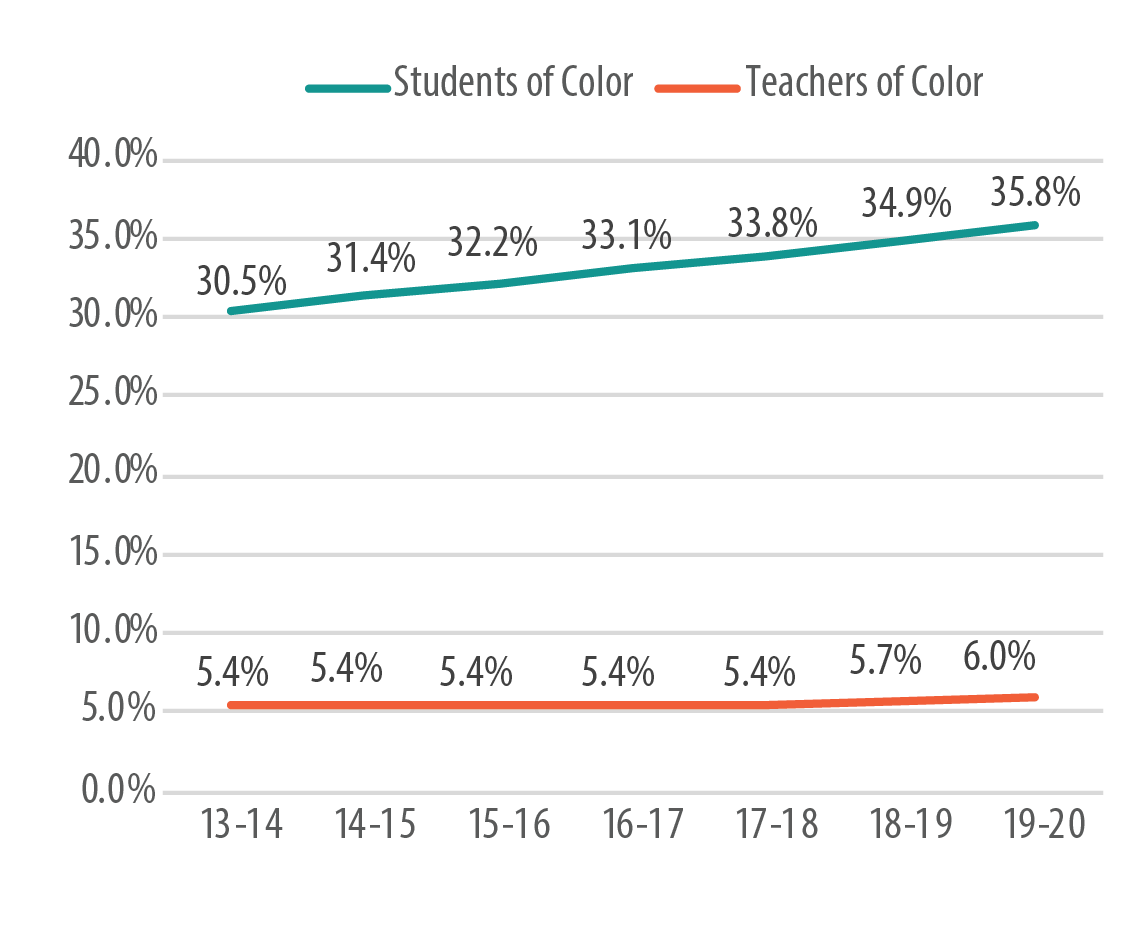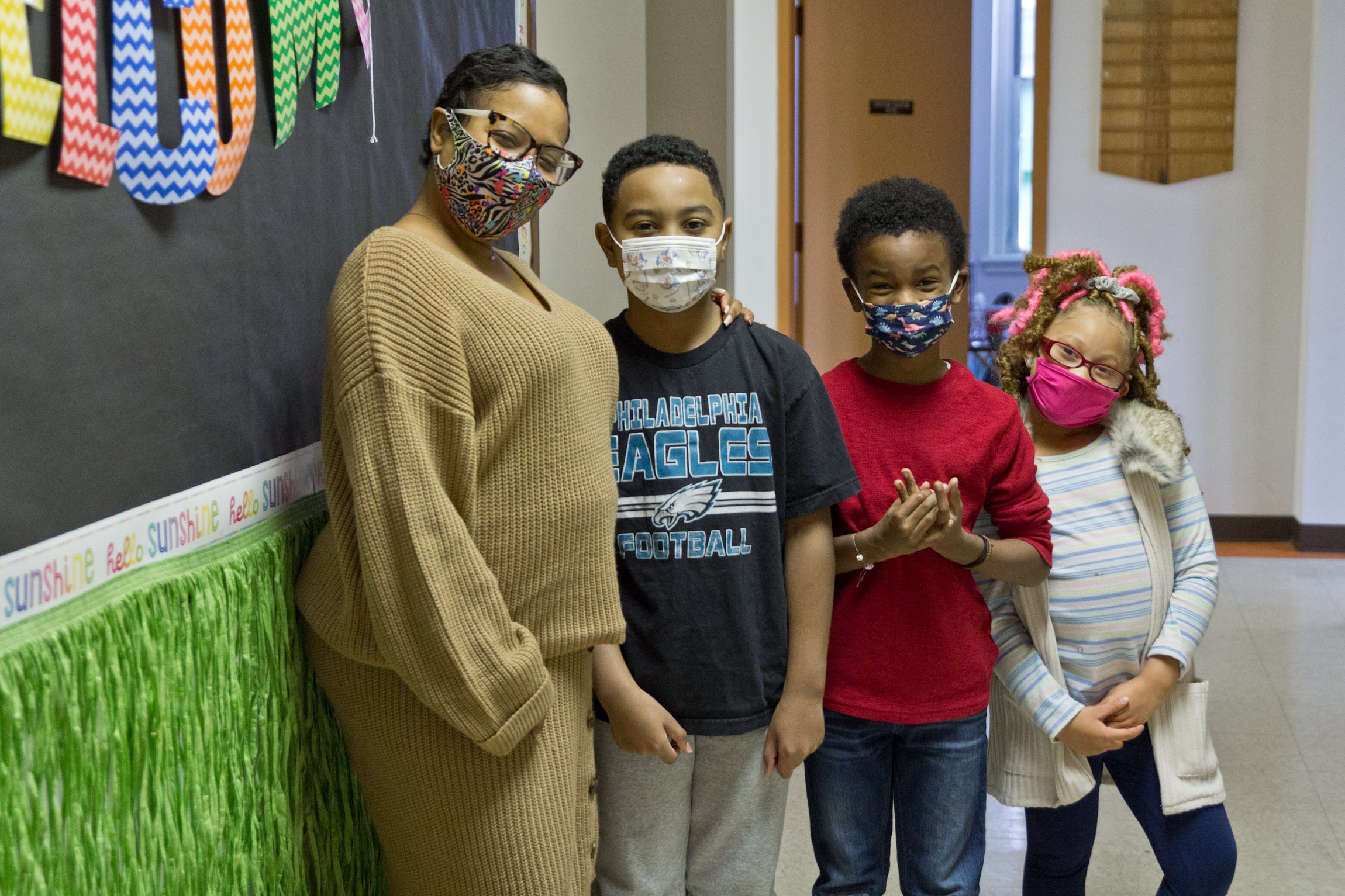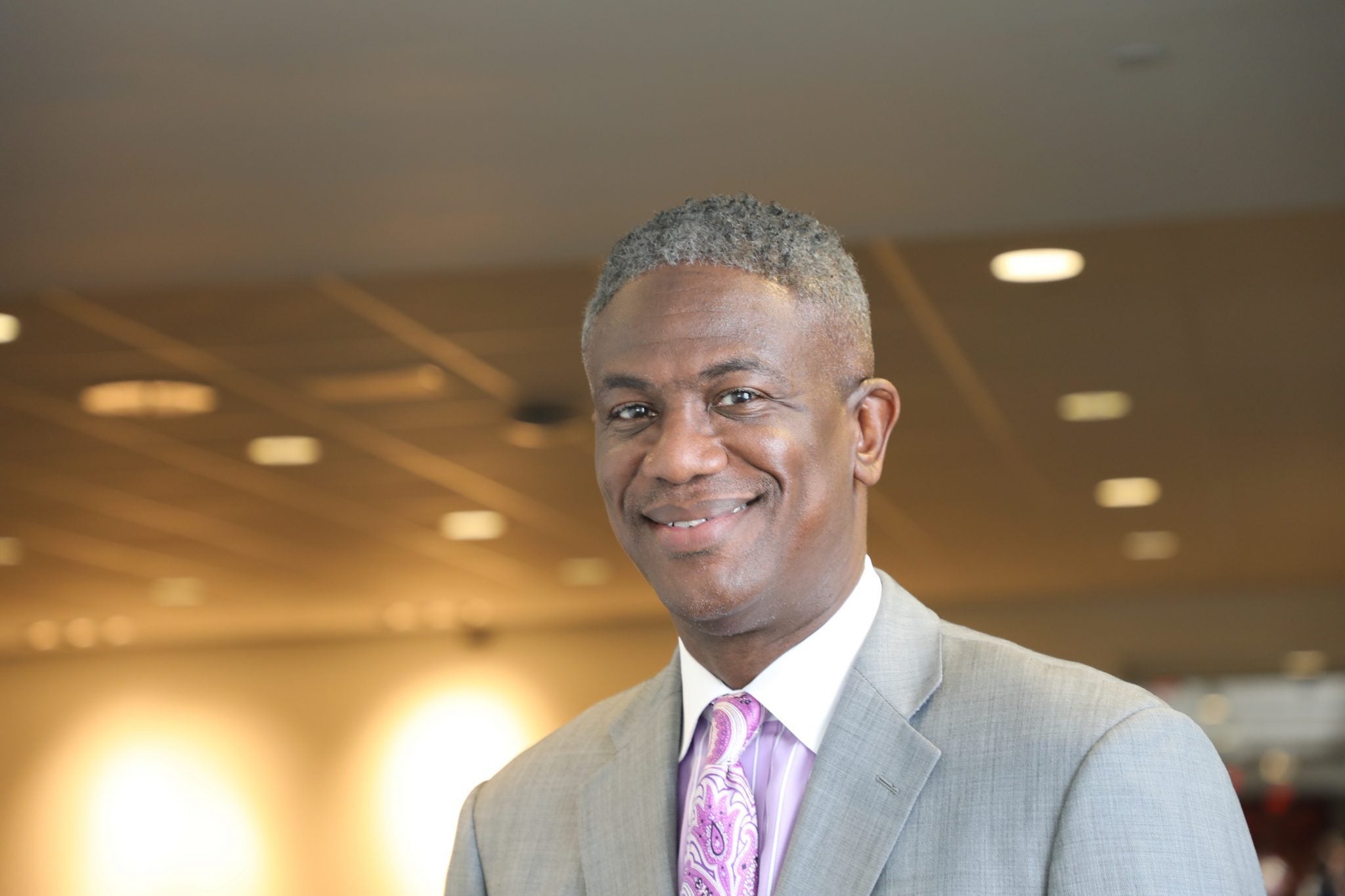
Ashley Dawson (left) and her daughter Shana Dawson at their home in Aldan, Pa.
Kimberly Paynter / WHYY

Ashley Dawson (left) and her daughter Shana Dawson at their home in Aldan, Pa.
Kimberly Paynter / WHYY

Kimberly Paynter / WHYY
Ashley Dawson (left) and her daughter Shana Dawson at their home in Aldan, Pa.
(Philadelphia) — When Ashley Dawson was in first grade, she was one of only a few Black students at Walnut Street Elementary in Darby.
But in fifth grade, her teacher, principal and assistant principal at the Delaware County school were all Black women. It’s what inspired Dawson, who now works as a family involvement coordinator at a cyber charter, to pursue a career in education.
She was sitting in assembly when she first saw Principal Renee Mustgrove and Assistant Principal Ivy Brown.
“There was something about them … I wanted to do what they did,” said Dawson. “Because they showed me what happens when you take the time and you really go outside the curriculum — you work with the student and meet them where they’re at. Those women, they did that.”
As Dawson moved through her middle and high school years in the William Penn School District, she continued to develop strong relationships with educators of color, who she largely credits for mentoring her and helping to prepare her for college.
Half a decade later, student demographics in the suburban Philadelphia district have completely transformed. It is now predominantly Black.
“When you look at some of the yearbook pictures, you can see how it started to change,” said Dawson, 37.
Diversity among the teaching force, however, has not kept up. William Penn has become one of the districts in the state with the widest gaps between its number of students of color and teachers of color.
There, only about 4% of the students are white, but about 80% of the teachers are. The disparity is even more skewed in schools in Duquesne, Harrisburg, Reading, Lancaster, and Southeast Delco, among others
The problem extends throughout the state.
According to an analysis of Pennsylvania student and teacher demographics by Keystone Crossroads and Research for Action, more than one-fifth of the state’s 500 school districts haven’t had a single teacher of color in at least seven years.

The map shows the location of all the schools in Pennsylvania that haven’t had a single educator of color in the past seven years. (Courtesy of Research for Action)
This includes three districts where students of color make up at least 30% of the district: Midland Borough School District in Beaver County, Northgate School District in Allegheny County, and Wyoming Valley West School District in Luzerne County.
In 2019-20, there were about a dozen schools statewide with 80% or more students of color and no teachers of color.
The findings come amid a years-long push by advocates to increase teacher diversity in the state. And while that effort has seen successes, that disparity between teachers and students remains among the largest in the country — growing wider in recent years as the state’s student body has diversified faster.

From 2013-2020 the gap between teachers of color and students of color in Pennsylvania has widened. (Courtesy of Research for Action)
In the William Penn School District, families say the result is a disservice to the education of students.
Ashley Dawson’s daughter Shana, 17, grew up going to schools in the district and is a senior at Penn Wood HS. But Dawson says the mentorship opportunities she was afforded two decades earlier don’t look the same for her child.
“I don’t want to say that those conversations are not happening, but when it comes to the next chapter of [her] life, I definitely feel like I am pushing a little bit harder at home,” said Dawson. “Just because she doesn’t have all of those teachers that look like her, that understand [her] struggle. I don’t know if she’s getting what I got.”
When Ashley Dawson was going through school, she doesn’t remember having “a whole bunch” of Black teachers, but she does remember interacting with a handful of Black teachers at each grade level.
“The numbers were still low, and they’re still extremely low to this day,” said Dawson.
But key Black educators took special interest in her and would stay after school to help her with assignments and, later, the college application process.
She says her daughter has had a rockier time at the school.
Mentorship opportunities for Shana with teachers of color have been limited, and she’s had a few particularly bad experiences she says stem from teachers who had trouble relating to students.
Sophomore year, Shana had been dealing with bouts of anxiety and things were made worse by a geometry class taught by a second-year white teacher where the classroom often devolved into chaos.
“It was so crazy in there, he just could not gain control,” said Dawson. “[The students] would walk out, they’d do whatever they wanted. And for [Shana], she was almost failing this class because she was not learning.”
On more than a few occasions, Dawson came to the school during the day to soothe her daughter.
“I probably had about three, four breakdowns and I had to call my mom to come get me,” said Shana. “At that time my triggers were really, really bad. So when there’s no classroom management, you’re in a room full of 26 kids, not learning anything, [The teacher’s] just at the board talking but nobody is listening to him, it’s very distracting.”
She failed two semesters in the class and had to retake it — a first in her academic career.
Shana’s experience in other classes, especially those led by Black teachers, has been much better. She and her mom see a clear reason why.
They say Black teachers in the district tend to live within the immediate community and have a presence there outside the context of school. It’s common for the Black teachers there to have grown up within the district themselves and know some of the parents.
That creates a rapport, built organically over the years, that the teachers can leverage in their classrooms.
When Shana had to retake geometry the following year, she took the class with Ms. Wagner, a Black woman. Shana says the standard for classroom behavior wasn’t ever explicitly discussed; it was simply understood.
“Ms. Wag is like a very sweet woman, but she also doesn’t play and she makes that known,” said Shana. “And generally with my classes [that] are led by African American women, the students kind of look up to them as like their moms or their aunts because they would not disrespect the other Black women in their lives, so why start with the teacher right here?”
Nicole Miller, 41, has been a kindergarten teacher at Evans Elementary in Yeadon for 19 years. She’s a product of the district and has three children who attend schools within William Penn. As both a parent and educator of Black children, she says the disciplinary issues that come up in classrooms where Black teachers are underrepresented can sometimes stem from a lack of cultural sensitivity.
“I think a lot of times our students are misinterpreted,” said Miller. “Like you can misinterpret the attitude because [non-Black teachers] just have these cultural biases.”
Kene Miller, 17, unrelated to Nicole, left the district during her junior year. She struggled academically for many years there and says she was made to feel like a “problem child” when she would seek help in class.
“[This teacher] always used to pick on me and make me feel inadequate,” recalls Kene. “When I would ask questions, she would make me seem like I’m a bad student, like anything I do or say was wrong.”
Jamella Miller, Kene’s mother, had to expend extra energy and financial resources to hire private tutors for Kene so she could keep up with her classes. Jamella said that the teacher’s actions amounted to a kind of “bullying” and reported it as misconduct to school administrators.

The Miller family sits in the living room of their Landsdowne home in 2016. (Emily Cohen for WHYY)
“I have to take time out of my day to talk to union reps, to talk to school board officials, to talk to the superintendent,” said Jamella.
In the end, no substantial action was taken.
Jamella’s other daughter, Jameira, 21, remembers effective and nurturing white teachers within the district, but says the more negative experiences she’s had with non-Black educators at William Penn happened because there was a lack of compassion and understanding for Black students.
When she was still a high schooler at Penn Wood, students were not allowed to use the school microwave to heat up their food.
“I [could never] have a hot meal unless I bought lunch from the school and the school’s food was subpar … So I talked to [the teacher] and she felt like, ‘No, students don’t need a microwave,’” said Jameira.
“[Yet] the school that her son goes to, it had nicer lunch options. They had a salad bar … Many teachers felt like, I guess we didn’t deserve the same things that their kids had, honestly.”
Nicole Miller of Evans Elementary says regardless of race, all the teachers she works with have immense content knowledge when it comes to the curriculum. She believes white teachers would do better by furthering their understanding of cultural competency.

Nicole Miller (left), a teacher at Evans Elementary School, with students McCaury Miller, 9 (second from left), Collin Timberlake, 9 (second from right) and Geviah Johnson, 6 (right). They are part of a learning pod in Delaware County. (Kimberly Paynter/WHYY)
“Content knowledge doesn’t always equal student success,” said Nicole. “I think that content mixed with, like, the familiarity with the culture helps because then you can make the content relatable to students.”
“Other teachers can do it but it does require a great amount of work, a great amount of research, effort and intentionality.”
White teachers in the district agree that intentionality is key.
Susan Norton, 50, is a Penn Wood graduate and a white teacher there now who says the school needs to do much more work to diversify its staff.
She says white educators there need to be especially self-reflective.
She cited a personal example from last year during one of her high school classes. A student had asked her to define racism during a class debate about the appropriateness of setting aside one month for Black history. She responded by saying that it’s a practice of treating an individual as inferior based on their appearance. The student disagreed with Norton, stating that racism is not an individual practice — it’s a systemic one.
“And I went back to my student and said, ‘I was completely wrong,’” recalled Norton. “‘I am amending my definition because mine is a dusty definition that doesn’t account for what’s going on.’”

Susan Norton is a teacher at the William Penn school district in Delaware County, Pa. (Kimberly Paynter/WHYY)
For Norton, being a white teacher of Black and Latino students means learning is always a two-way street. She says she strives to listen to her students. She depends on them to keep her accountable and she works to create an inclusive classroom environment. As an advanced placement language teacher, she thinks hard about selecting a diverse range of writers and books that represent her student body. She acknowledges the breadth of languages and cultures her students come from and integrates them into assignments and projects.
Above all, she says being an effective teacher comes from carrying deep respect for students.
“I have been telling my classes for decades, I am not the only one who is qualified to be a teacher,” Norton said. “I need you here, I need you next to me. I need you to make sure that we are working together for our community.”
Black educators in the William Penn School District say students would be in a much better place now if prior top-level administrators would have prioritized diversity in hiring.
Elizabeth Brown, 41, says her story is case in point.
Brown is a Yeadon success story. She and her family moved there when she was three months old. She remembers being the first Black family on her block during a period of increasing Black migration to the suburbs across the country. Between 1960 and 1980, an average of over 100,000 African Americans moved to the suburbs each year, a rate of increase that was faster than that of white Americans.
Brown graduated from the William Penn School District and came back to teach middle school English at 21, straight out of college. She did a stint in Southeast Delco School District before getting a master’s degree and certification to become an administrator so she could “make change on a larger scale.”

Elizabeth Brown is the assistant principal of Penn Wood High School. (Kimberly Paynter/WHYY)
She returned to William Penn as counselor but didn’t feel that her ambitions were welcomed by district leaders.
For five years, she says she was turned down for promotion after promotion. Other teachers of color in the district came to also feel they were not being considered for jobs they were qualified for because of racism. In August of 2018, Brown and another teacher in the district, Kim Evans-Johnson, filed a joint lawsuit against the district for violations of the 1964 Civil Rights Act, as well as for race and gender discrimination in hiring practices.
They went to trial in March 2020 but ultimately lost. William Penn School District Superintendent Jane Ann Harbert and Human Resources Director Joseph Conley claimed that the “Plaintiffs’ work behavior was sanctionable, that their qualifications were lacking in leadership and experience, especially in comparison to those chosen for positions ahead of them, and that they interviewed poorly.”
Brown, with more than 16 years of above-proficient evaluation ratings, had a hard time accepting that result.
“There were teachers [who’d tell me] I don’t understand how you don’t have this job,” said Brown. “It would be numerous jobs like this, and we just noticed like there were people who were getting hired but didn’t have the qualifications, but we had the qualifications.”
Johnson and Brown also claimed that it was common for the district to give teaching and administrative positions to individuals without publicly posting the job.
“This is my home,” said Brown, referring to the district she grew up in. “So to have to sit there and realize that that’s what happening, it was painful.”
Harbert, who retired as William Penn’s superintendent at the end of last school year, did not respond to a request for comment.

Penn Wood High School Cypress Campus in Delaware County, Pa. (Kimberly Paynter/WHYY)
Brown’s fortunes changed this year when Eric J. Becoats became the district’s new superintendent. An African American administrator who’s worked as an educator for nearly three decades, including in Philadelphia, Becoats says he’s revamping the district’s hiring practices to make them more transparent to applicants.
Brown decided to try again for a leadership position and was recently made assistant principal at Penn Wood High School.
“I was like, ‘I’ll try one more time,’” said Brown. “I knew I should have this job and I went through and [the process] was very clear on what you were supposed to be doing, what was the expectation.”
Brown and several teachers WHYY spoke to in William Penn have noted increased attention given to issues of racial equity within the district since Becoats became superintendent. That includes a racial equity forum he spearheaded as part of the formal professional development teachers are required to undertake.

Eric J. Becoats is in his first year as superintendent of the William Penn School District (Courtesy of William Penn School District)
In the wake of the pandemic and growing racial and social unrest across the country, Becoats says he wanted to create a space for teachers and staff to discuss biases and develop tools to better support the student body.
“I thought it was important for us to spend time talking about race, equity, and inclusion: What does it mean? What does it look like?,” said Becoats. “I don’t believe in one-stop shopping when it comes to professional development. I believe that you have to have something that is continuous, something that allows people to grow over time.”
Every first Wednesday, teachers and school officials across the district meet virtually on Zoom and an independent moderator curates a conversation about issues that arise in classrooms and schools, like discrimination and cultural bias.
These are all first steps, but ultimately Brown says the district needs to start actively recruiting teachers from historically Black colleges and universities in the state, have more Black administrators on hiring panels, and promote Black teachers from within.
Brown says the dearth of Black teachers in the district trickles down to students of color, who risk not being pushed to achieve their fullest potential if they’re dealing with teachers who project negative stereotypes onto them.
“I do think that our district is shifting,” noted Brown. “We have great teachers, Black and white, but I do think we have an issue that needs to be addressed as far as retaining and looking for African American educators.”
Keystone Crossroads is a statewide reporting collaborative of WITF, WPSU and WESA, led by WHYY. This story originally appeared at https://whyy.org/programs/keystone-crossroads.

Sometimes, your mornings are just too busy to catch the news beyond a headline or two. Don’t worry. The Morning Agenda has got your back. Each weekday morning, host Tim Lambert will keep you informed, amused, enlightened and up-to-date on what’s happening in central Pennsylvania and the rest of this great commonwealth.
The days of journalism’s one-way street of simply producing stories for the public have long been over. Now, it’s time to find better ways to interact with you and ensure we meet your high standards of what a credible media organization should be.